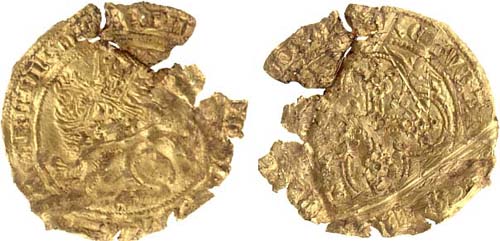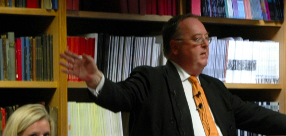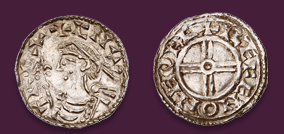
Auction: 3011 - The Colin Adams Collection of British Pennies, Foreign Coins & Medals
Lot: 379
Edward III (1327-77), Leopard or Florin, 3.55g., third coinage, first period, +edw[ar'.] d'.g[ra'.rex.angl'.]franc'.dns'.hib,, crowned leopard walking to left bearing banner with the arms of England and France, rev., [+.domine:ne:in.fvro]re:tvo.ar[gvas:me], ornate cross in double quadrilobe with lis on the cusps and leopards passant in the quarters (Schneider I -, but see illustrations on p.11; S. 1477; N. 1106), poor to fair, broken and repaired, of the highest rarity; believed to be the only specimen available to collectors; three others are known, two in the British Museum and one in the Ashmolean Museum Estimate £ 5,000-7,000 The Florentine gold Florin, originally introduced in 1252, had become an internationally accepted medium of exchange throughout Europe during the 14th century. The commencement of the Hundred Years War in 1337 brought many of these into north western Europe, not least because of Edward's large borrowings from Florentine banks, and a three year truce made between England and France in 1343 provided an opportunity for the resumption of trade. It is not surprising, therefore, that the King should wish to strike Florins for his own profit and to underline his pretensions to the French throne. The English Florins valued at 3s. 0d. with their doubles and halves were introduced under an indenture dated 4 December 1343 and production commenced on 20 January 1344. They were not successful mainly because of the high seignorage. A merchant taking a pound of fine gold worth £15. 0s. 0d. to the mint would only receive £13. 16s. 6d. back. Although the difference of £1. 3s. 6d. provided for production costs, the main part went to the Crown. To show how excessive this was one has only to look forward ten years, to 1353, when the difference had come down to 6s. 8d!
Another factor against the popularity of the Florin was the fact that it did not fit very conveniently into the English money of account system, which at the period this was based on the pound of 240 pence and on the mark of 160 pence. Although the Florin was mainly intended for export trade it was quickly succeeded by the Noble of 6s. 8d. which was half a mark and one third of a pound.
The coinage of English Florins, their doubles and halves, was discontinued by July 1344. During the seven months in which they were issued only 2,129 Tower pounds of gold were struck.
Confusion has arisen over the question of whether the coin here offered should be described as a Florin or a Half-florin. It is unquestionably a Florin. The coin started life at much the same weight and fineness as the contemporary Florentine coin. The larger coin, the Double-leopard, called a Florin by Kenyon, Brooke and others is, in fact, a Double-florin, and, indeed, is described in contemporary documents as 'equal to two little florins of Florence'.
Sold for
£4,400




